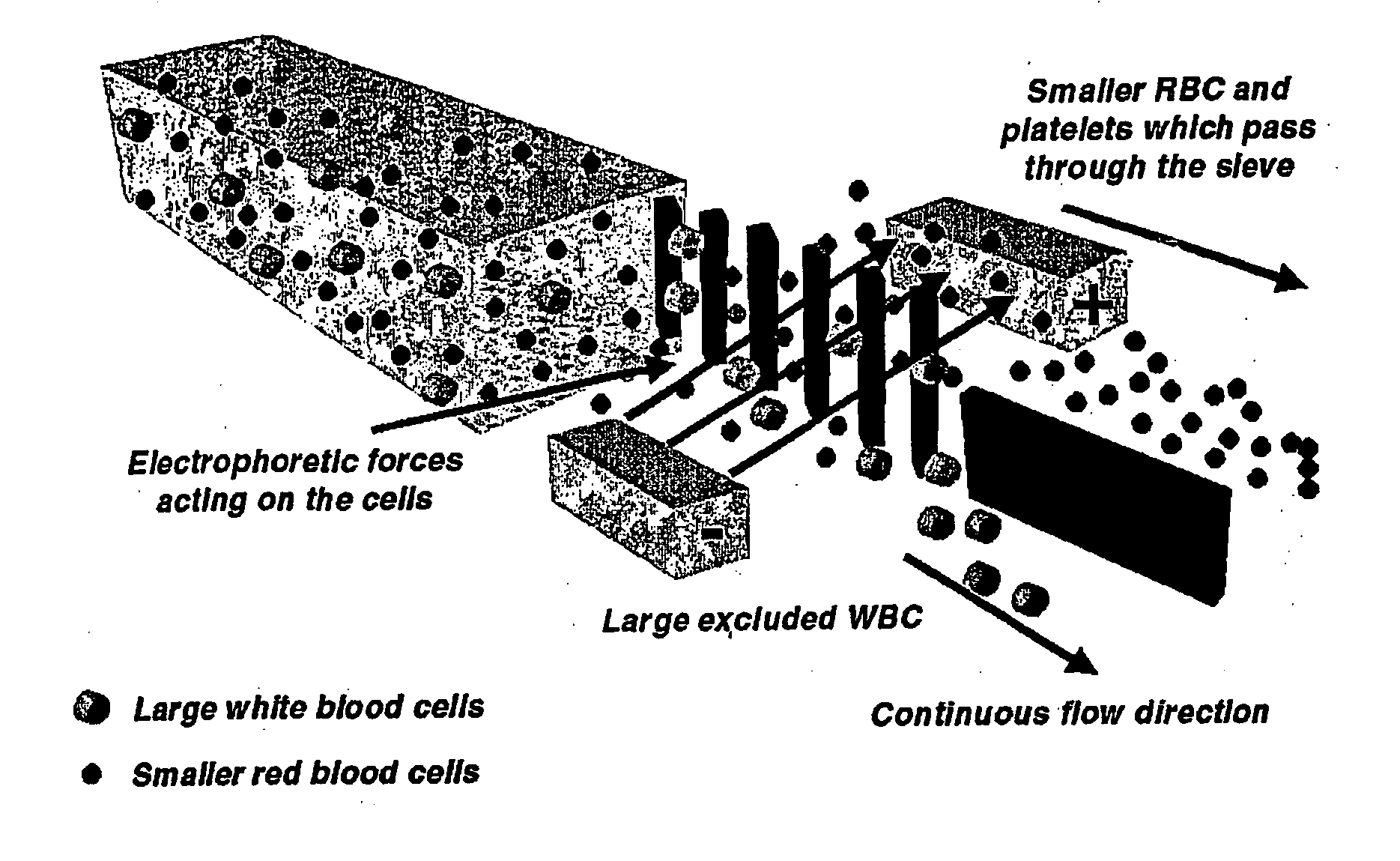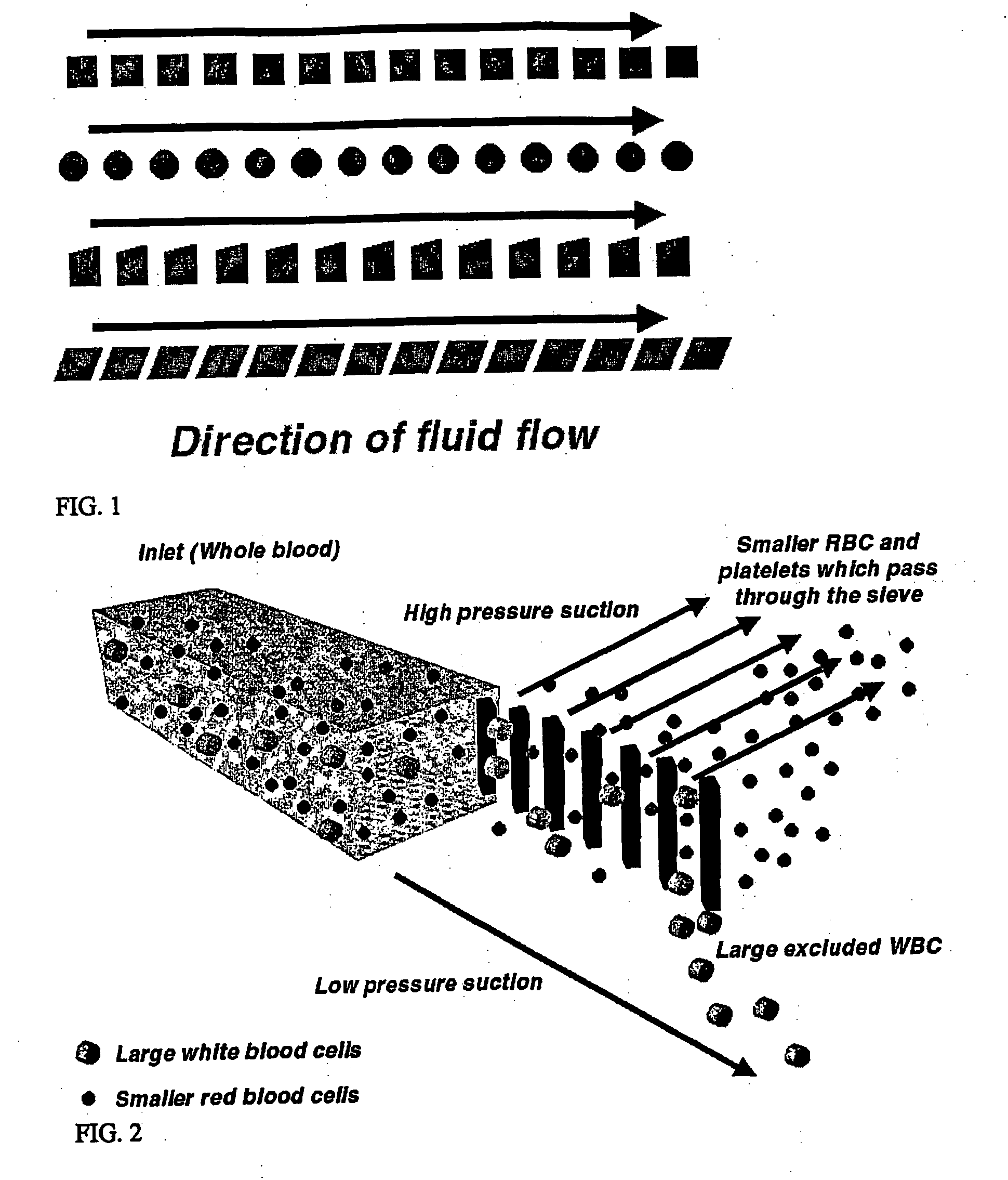Microfluidic systems for size based removal of red blood cells and platelets from blood
a microfluidic system and platelet technology, applied in the field of medical diagnostics and microfluidics, can solve the problems of large and expensive equipment, large sample volumes, and inability to accurately detect the presence of red blood cells and platelets in the blood,
- Summary
- Abstract
- Description
- Claims
- Application Information
AI Technical Summary
Benefits of technology
Problems solved by technology
Method used
Image
Examples
example 1
Diffusive Filter
[0054] A device for size based separation of smaller RBCs and platelets from the larger WBCs was fabricated using simple soft lithography techniques (FIG. 13). A chrome photomask having the features and geometry of the device was fabricated and used to pattern a silicon wafer with a negative replica of the device in SU-8 photoresist This master was then used to fabricate PDMS channel and sieve structures using standard replica molding techniques. The PDMS device was bonded to a glass slide after treatment with O2 plasma. FIG. 13 shows a low magnification image of the channel structure with the diffuser geometry and sieves. The diffuser geometry is used to widen the laminar flow streamlines to ensure that the majority of the particles or cells flowing through the device will interact with the sieves. The smaller RBC and platelets pass through the sieves, and the larger WBCs are confined to the central channel. A higher magnification picture of the sieves is shown in ...
example 2
[0055] Electrophoresis can also be used to move cells across their laminar flow streamlines and ensure that all the cells or particles interact or come in contact with the sieves. The device was fabricated as in Example 1, but the PDMS is bonded to a glass slide having gold electrodes that were patterned photolithographically (FIG. 15). Electrophoresis is used to attract negatively charged cells towards the positively charged electrode. The smaller RBC and platelets pass through the sieves, while the larger WBCs are excluded. The WBCs are isolated and extracted through a separate port
PUM
| Property | Measurement | Unit |
|---|---|---|
| size | aaaaa | aaaaa |
| size | aaaaa | aaaaa |
| size | aaaaa | aaaaa |
Abstract
Description
Claims
Application Information
 Login to View More
Login to View More - R&D
- Intellectual Property
- Life Sciences
- Materials
- Tech Scout
- Unparalleled Data Quality
- Higher Quality Content
- 60% Fewer Hallucinations
Browse by: Latest US Patents, China's latest patents, Technical Efficacy Thesaurus, Application Domain, Technology Topic, Popular Technical Reports.
© 2025 PatSnap. All rights reserved.Legal|Privacy policy|Modern Slavery Act Transparency Statement|Sitemap|About US| Contact US: help@patsnap.com



